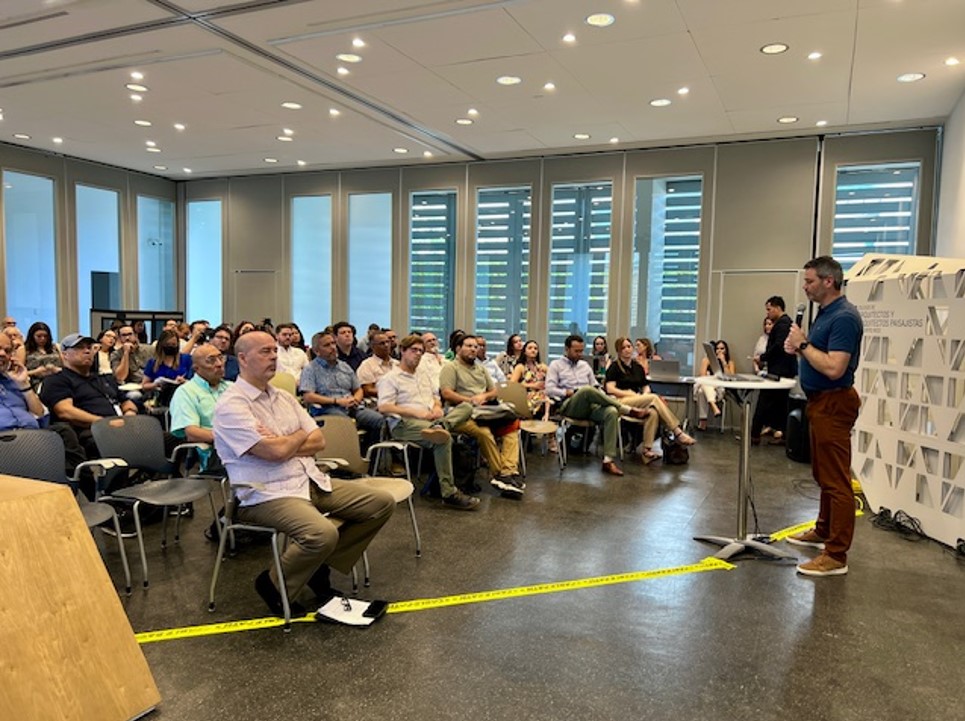Guaynabo, PUERTO RICO - One of the key components in the comprehensive recovery of any area affected by a disaster is hazard mitigation; that is, what changes need to happen to reduce or eliminate the risks for people and property if they face a similar disaster in the future.
Based on this, the Federal Emergency Management Agency (FEMA) published three Nature-Based Solutions (NBS) job aids about shoreline and dune stabilization and restoration, bank stabilization, and stormwater management.
The purpose of these guides is to provide tools to facilitate the integration of NBS strategies to address the problems caused by Hurricane María. The job aids were created specifically to address the particular challenges faced in Puerto Rico and were developed in collaboration with non-profit organizations such as The Nature Conservancy, Protectores de Cuencas and the Center for Restoration and Coastal Ecological Conservation: Marine Life at the University of Puerto Rico in Aguadilla.
“These solutions promote climate change adaptation, reduce urban heat, stabilize shorelines, restore and protect wetlands, reduce flood risk and protect coastal assets, among others. The job aids share mitigation information and data specific to Puerto Rico that is vital for decision making; they are available to municipal governments, organizations and agencies,” said Deputy Federal Disaster Recovery Coordinator Andrés García-Martinó.
NBS are sustainable practices — on planning, design, environmental management and engineering — that integrate natural characteristics or processes into the built environment to create resilient communities. In other words, NBS mimic the way the environment behaves.
These measures help to promote climate resilience, decreasing the impact of weather events. Over time, these solutions tend to grow stronger and provide a host of social and ecological benefits.
According to FEMA’s Interagency Recovery Coordination Community Assistance Branch Chief Ela Cruz Nazario, what set apart these job aids from others that FEMA has previously developed is that “they are conceptualized specifically for the geographic reality of Puerto Rico, which facilitates their use and implementation. With this new resource, we recognize the need to incorporate strategies that address climate change and promote resilience.”
Regarding the difference between NBS and past solutions, Community Assistance Program Analyst Frances Santiago explained that “gray infrastructure, which has historically been used in many areas, is aging. Its existing capacity decreases over time and maintenance costs increase, whereas NBS provides benefits over time and can be used at different scales to manage various risks.”
The Content of the Job Aids
The Natural and Nature-Based Solutions Job Aid for Sandy Shorelines/Dune Restoration/Enhancement in Puerto Rico covers topics such as the context of coastal erosion, the role of gray infrastructure, improvements to public access to the coast, dune restoration and creation, plant choices, signage and protection. The job aid highlights that coastal erosion can lead to loss of land, infrastructure and habitats along the coast, which can be exacerbated by sea level rise, storm intensity and construction.
On the other hand, the background of bank erosion, channel condition, riparian vegetation management and vegetated structural measures are detailed in the Natural and Nature-Based Solutions Job Aid for Streambank Stabilization in Puerto Rico. This resource points out that bank erosion has direct implications for flood management, water quality, public supply and ecological stability, so sustainable practices are urgently needed.
Similarly, the Natural and Nature-Based Solutions Job Aid for Stormwater Management in Puerto Rico discusses bioretention systems, permeable pavements and rainwater harvesting. The job aid highlights that watersheds have suffered significant alterations due to changes in land use, deforestation and urban development, which modifies drainage patterns and flood levels.
All job aids include the appropriate environments for implementation, monitoring and adaptive management; required construction materials and equipment; cost estimation and regulatory aspects, as well as tables, images, photos and case studies.
FEMA’s Interagency Recovery Coordination (IRC) Community Assistance, established in Puerto Rico since 2018, collaborates with local government to ensure an integrated, community-wide recovery. While the IRC does not control the distribution of funds, they do identify resources and are a clearinghouse of information to help communities develop and implement their recovery plans.
For more information about Puerto Rico’s recovery, visit fema.gov/disaster/4339, fema.gov/disaster/4473 and recovery.pr. Follow us on our social media at Facebook.com/FEMAPuertoRico, Facebook.com/COR3pr and Twitter @COR3pr.

SAN JUAN, Puerto Rico (June 21, 2024) – the Federal Emergency Management Agency (FEMA) published three Nature-Based Solutions (NBS) job aids about shoreline and dune stabilization and restoration, bank stabilization, and stormwater management. Photo FEMA / Eliezer Hernández

SAN JUAN, Puerto Rico (June 21, 2024) – The Nature-Based Solutions (NBS) job aids provide tools to facilitate the integration of NBS strategies to address the problems caused by Hurricane María. The job aids were created specifically to address the particular challenges faced in Puerto Rico and were developed in collaboration with non-profit organizations such as The Nature Conservancy, Protectores de Cuencas and the Center for Restoration and Coastal Ecological Conservation: Marine Life at the University of Puerto Rico in Aguadilla. Photo FEMA / Eliezer Hernández

